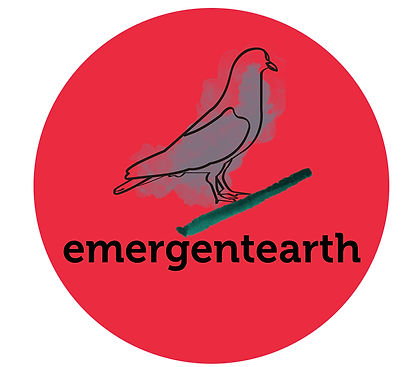an emergent
website design
by
peter jay stein, md, ma
atmosphere
asthenosphere
lithosphere
regolith
biosphere
hydrosphere



This 54 page synopsis of the evolution
of the Earth, the origin and progression of life, and the
emergence of humans as descendants of the hominin lineage, divides the last 4.57 billion years into progressively overlapping, imagistic, time segments, to outline our place in biological existence.
magnetosphere
ionosphere
slideshow: click images to enlarge
To understand the human condition, one must grasp the geologic time frame, of thousands, millions, and billions of years. Such unthinkable stretches of time become thinkable, and stretch the imagination, as one familiarizes oneself with the rough sequence of major developmental events, literally from the beginning of time, proposed by those who study the multi-dimensional, multi-disciplinary fields that contribute to the understanding of human existence.




MAJOR CHANGES IN EARTH, LEADING TO THE EVOLUTION OF LIVING THINGS





how did we get here?
The emergence of
life on
Earth -
quick review:
1) the collapse of a giant, cosmic
cloud of dust
and gas, remnants
of debris from
a first generation of dead stars following the Big Bang,
forms the early solar system, the sun
at the center;
2) the accretion of enlarging, aggregated clumps
of dust particles
through gravity and electrostatic forces, forms the
early Earth,
one of about 20
proto-planets;
3) iron, pulled to Earth's center, creates
a metal core,
which then generates giant magnetic
fields encircling
the Earth,
shielding the planet from
the atmosphere-destroying
solar wind,
deflecting it, and diverting some of the solar wind to the poles, forming the
Northern and
Southern Lights;
4) following it's collision with the planet Theia, which melts the Earth's surface, the collision debris forms the
moon, and
the Earth's
subsequent tilt
creates the seasons;
5) after it's molten-rock (lava, magma) surface has cooled, i.e., there develop more stable
land masses;
6) the giant planet Jupiter's orbital path pulls asteroids from the asteroid belt, setting off 150 million years of Earth bombardment;
7) there follows relative quiescence of asteroid (large) and meteoroid
(smaller) bombardment;
8) meteoritic
water droplets, carried within sodium chloride (NaCl) molecules, create the oceans relatively rapidly,
water thus released from meteorite-derived solid rocks, onto the Earth's surface ("degassing"), and then into the atmosphere as water vapor ("outgassing");
9) water cycles of evaporation, and atmospheric precipitation are initiated;
10) there is an initial absence of free
oxygen (which, if present, would hijack necessary inorganic ions, by forming oxides);
11) energy sources (such as UV radiation),
water + atmospheric gases +
dissolved inorganic ions + time,
create biologically viable, larger organic molecules (polymers), including the first, single RNA strands;
12) there appear single cell, DNA-driven, photosynthetic, blue-green bacteria 3.5 billion years ago;
13) after oxygen from these stromatolites oxidizes and precipitates out all the iron (Fe) in the oceans, forming iron oxide, oxygen starts
to enter the atmosphere about 2.5 billion years ago;
14) eventually, by about 500 mya, a 20%
atmospheric oxygen
concentration accumulates, by the continued conversion of CO2 to oxygen via photosynthesis;
15) protection from our sun's ultraviolet (UV) radiation arises via an ozone shield, created by the conversion of O2 to O3 (ozone), by the deadly UV radiation, itself;
16) stable land masses consolidate, perched upon massive, shifting tectonic plates;
17) there emerges a soil-enriched, "regolith" blanket (see definition, below), non-existent on any other known planets; and
18) relative climatic stability appears, within an extremely narrow range of temperature variability, the Earth positioned relative to the sun in the "Goldilocks zone":
i.e., a rocky planet that is neither too hot nor too cold for sustaining liquid water.
Such complex factors must co-occur, in order to support a vast stage that facilitates the emergence of increasingly complex, living organisms, armed with the capacities to survive, adapt, and reproduce, within a brutally competitive,
evolving environment.
The catastrophic upheavals, which were essentially cataclysmic periods of climate change, responsible for the Earth's formation and for life's evolution, have been necessary pre-conditions for the emergence and survival of Homo sapiens, starting with the annihilative collision that formed the moon and tilted the Earth's axis, giving rise to the seasons, to the emergence of small remnants of animal life, following the Ordovician-Silurian marine (445-441 mya), the massive Permian (252 mya), and the (K-T) Dinosaur (66 mya) extinctions.
It was through and after this latter, apocalyptic extinction event, that there survived a squirrel-like, mammalian ancestor (~60 mya) that, in turn, made possible the evolution of primates, anthropoids, hominoids,
hominids, hominins,
and
humans.
in spite of, BECAUSE
OF,
the great
extinctions
This web-site organizes and simplifies the various factors related to the emergence of human life, retaining the technical language of paleoanthropology, and related sciences, while presenting the facts in an imagistic way that facilitates the grasp of the sequence of the unfolding of events; events that have unfolded over billions of years, into the puzzling and awesome existence of us.
web-site purpose
ONE
Emergent Humans

